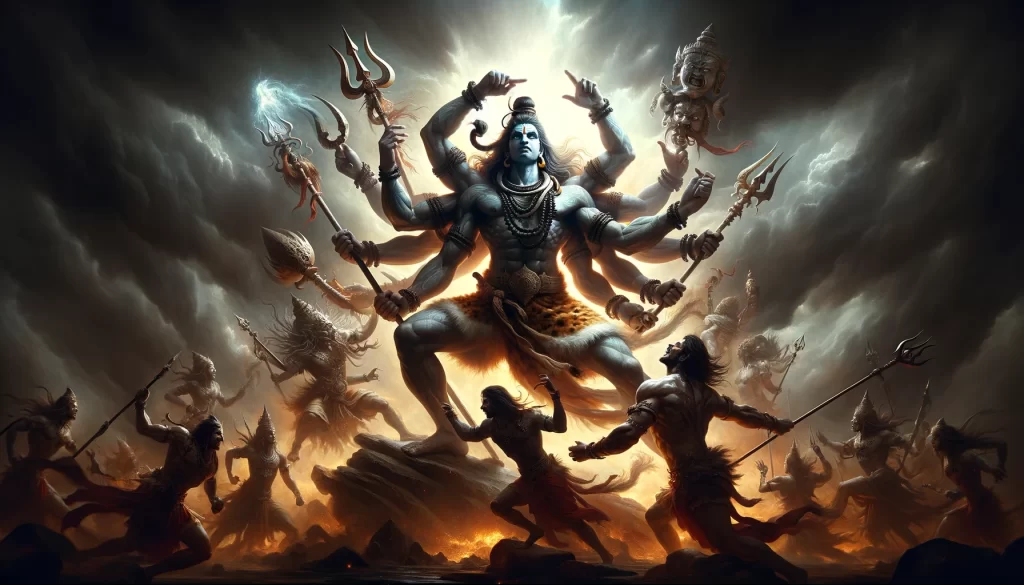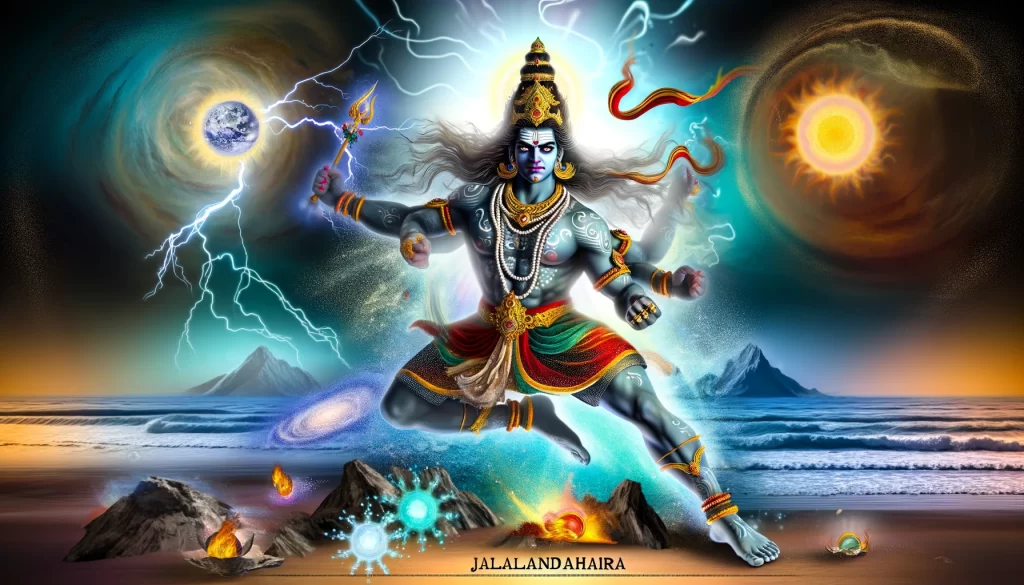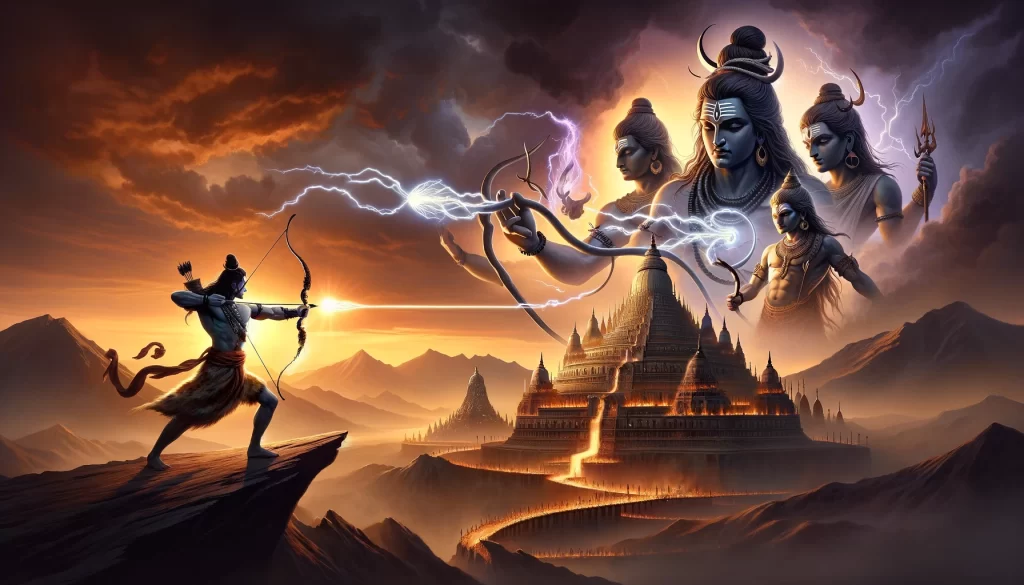There isn’t a simple answer to Who is the biggest enemy of Lord Shiva? but Andhaka, Jalandhara and Tripurasura are considered biggest enemies of Lord Shiva along with philosophical enemy ignorance (avidya).
Lord Shiva is one of the principal deities of Hinduism, is revered as the destroyer and transformer within the Trimurti, alongside Brahma the creator and Vishnu the preserver. Lord Shiva’s narratives are rich with tales of cosmic dances, the flow of the Ganges from his matted locks, and his abode in the snow-clad peaks of Mount Kailash. However, as with any figure of such immense power and significance, there are adversaries, challenges, and enemies that often try to create troubles for Lord Shiva. Here we look into who is the biggest enemy of Lord Shiva?
it’s important to understand Concept of duality in Hindu Mythology to know Who is the biggest enemy of Lord Shiva?
Before delving into specific names to answer, Who is the biggest enemy of Lord Shiva? it’s crucial to understand the concept of duality in Hindu mythology. The idea of good versus evil, creation versus destruction, and gods versus demons is a recurring theme. In this context, Lord Shiva’s enemies are often not just individuals but symbolize greater cosmic principles or human vices that he, in his role as the destroyer, aims to overcome. These confrontations are not merely physical battles but also represent the struggle between higher consciousness and primal instincts.
Andhaka: The Darkness Within
Andhaka’s tale is a riveting chapter in the vast epics of Hindu mythology, encapsulating the eternal struggle between divine righteousness and the hubris of power. Born to the demon kings Hiranyaksha and Hiranyakashipu, Andhaka was endowed with immense strength and prowess. However, his greatest strengths soon became the source of his downfall, as his ego and unbridled ambition led him on a path of destruction. Seeking to expand his dominion, Andhaka set his sights on the heavens, challenging the celestial order itself.
His audacity knew no bounds when he desired goddess Parvati, wife of Lord Shiva. Andhaka’s desire to possess her led to epic confrontation between lord Shiva and Andhaka. The battle between Shiva and Andhaka was more than a clash of titanic forces; it was a representation of the internal battles faced by every being. Lord Shiva stood as the guardian of balance and righteousness whereas Andhaka, blinded by his desires and pride, represented the darkness that ensnares many in the grip of ignorance and ego.
Despite Andhaka’s formidable might and the havoc he wreaked, Shiva ultimately vanquished him, a testament to the superiority of divine consciousness over base instincts. The defeat of Andhaka was not just the end of a demon but symbolized the triumph of light over darkness, wisdom over ignorance, and humility over pride. This story, rich in symbolism and moral lessons, underscores the virtues that are cherished and upheld in Hindu philosophy. It serves as a reminder that no matter how powerful one becomes, succumbing to ego and ambition without regard for righteousness leads to downfall. The tale of Andhaka and Shiva thus resonates with the universal truth that true strength lies in wisdom, restraint, and the embrace of one’s dharma.

Jalandhara: The Tide of Arrogance
In the rich tapestry of Hindu mythology, Jalandhara stands out as a unique and compelling figure. His name, Jalandhara (Sanskrit: जलन्धर), meaning “he who holds water,” and his alternative name, Chalantarana (Sanskrit: चलन्तरण), translating to “he who walks and swims,” signify his profound connection to the elemental force of water. This connection is deeply symbolic, reflecting not only his dominion over aquatic realms but also his fluid nature, embodying change and adaptability, characteristics that define his story within the mythological narrative.
Jalandhara’s origins are as dramatic as his life and eventual demise. Born from the fiery energy emitted by Lord Shiva’s third eye—an eye that opened in a moment of fury when Indra, the king of gods, struck him with a thunderbolt—Jalandhara’s creation is steeped in the cosmic dance of creation and destruction that pervades Hindu mythology. This potent energy did not dissipate; instead, it was cast into the ocean, where it took form as a boy. Raised by Varuna, the god of the oceans, and later mentored by Shukracharya, the sage of the asuras, Jalandhara was destined for greatness. Under their guidance, he grew in power and wisdom, eventually asserting his dominance over the three realms: Svarga (heaven), Bhuloka (earth), and Patala (the underworld).
Jalandhara’s narrative is not just a tale of power and conquest; it is also a love story. He married Vrinda, the daughter of the demon Kalanemi, further solidifying his ties to the asura lineage. However, his story, like many in Hindu mythology, is a circular journey that returns to its origin. Despite his formidable power and the realms he conquered, Jalandhara was ultimately slain by Lord Shiva, the very deity from whose energy he was born. This act underscores a pervasive theme in Hindu mythology: the cyclical nature of existence, where creation inevitably leads back to destruction, only to give way to rebirth. Jalandhara’s life, filled with ambition, love, and conflict, reflects the complex interplay of dharma (duty), karma (action), and the ultimate cosmic balance maintained by the gods.

Tripurasura: The Three Cities of Illusion
The saga of Tripurasura, the three demon sons of Tarakasura, who built three indestructible cities of gold, silver, and iron, represents another layer of Shiva’s adversaries. The three asuras—sons of the demon Tarakasura—embarked on a path of conquest and tyranny, fortified by their seemingly indestructible cities of gold, silver, and iron. These cities were not just physical structures but symbolized the heights of materialism and ego that can ensnare beings, leading them away from spiritual truth.
In Hindu mythology, the construction of these cities and the havoc wreaked by Tripurasura represent the collective human tendencies towards greed, attachment, and the illusion of permanence in the material world. The cities of Tripura, orbiting the universe and causing distress, became a cosmic concern, symbolizing how unchecked desires and arrogance can disrupt the natural order and harmony.
The intervention of Lord Shiva, requested by the gods to end the tyranny of Tripurasura, is emblematic of the necessity of divine intervention to restore dharma (cosmic law and order).

The destruction of Tripura with a single arrow from Shiva’s bow is laden with symbolism. It represents the annihilation of ignorance and illusion with the light of wisdom. This act signifies the importance of discernment and detachment from the material temptations that bind the soul to the cycle of birth and death (samsara). The arrow of Shiva can be seen as the focused intent and awareness that cuts through ignorance, revealing the impermanent nature of the physical world and the eternal truth of the spiritual realm.
This story serves as a powerful allegory for the spiritual journey, emphasizing that liberation (moksha) is achieved not through the accumulation of wealth or power but through the realization of one’s true self beyond the physical and ephemeral. The saga of Tripurasura and the destruction of Tripura highlight the essential Hindu teachings on the dangers of material attachment and the liberating power of divine wisdom, urging seekers to look beyond the veil of maya (illusion) to the unchanging truth.
Beyond Mythology: The Philosophical Adversary
On a philosophical level, Shiva’s greatest enemy can be argued to be ignorance (avidya) itself. In Shaivism, Shiva is the supreme consciousness that illuminates reality, making ignorance the antithesis of what he represents. The battles with demons and asuras can be interpreted as allegories for the internal struggle against the darkness of ignorance, ego, and attachment that binds the soul to the cycle of birth and death.
The Everlasting Dance of Good Over Evil
In essence, while mythological stories provide us with literal adversaries like Andhaka, Jalandhara, and Tripurasura, the essence of Shiva’s battles lies in the eternal struggle against the darker aspects of existence. These narratives are not just tales of victory and defeat but are profound allegories for the spiritual journey towards enlightenment, where Shiva’s true enemy is anything that hinders the realization of the ultimate truth.
